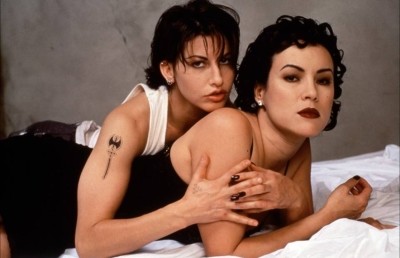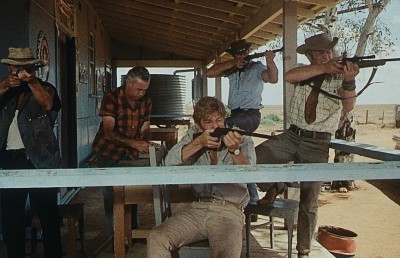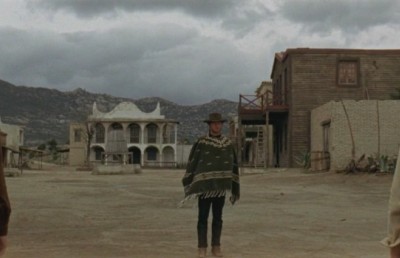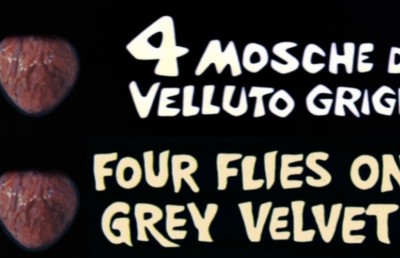Cinematic Nostalgia and Blue Nights: On Jean Rollin’s Two Orphan Vampires
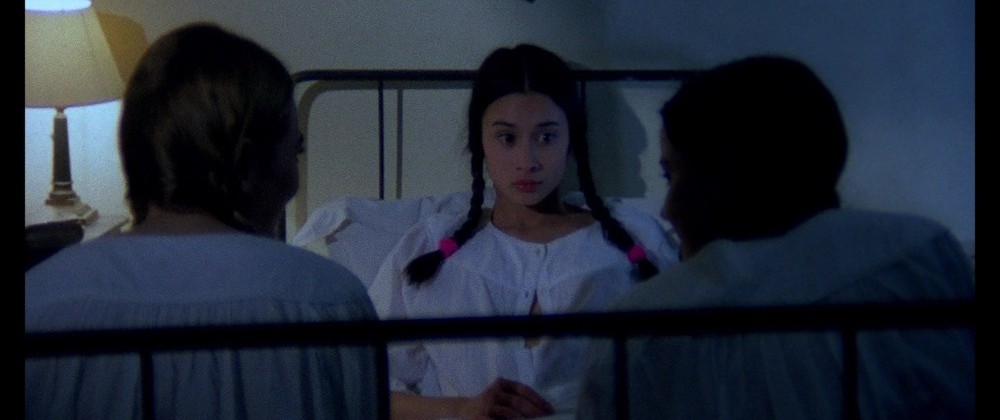
It might appear necessary to start an analysis of a Jean Rollin film that has any pretense of scholarly intent with a justification for such a choice. The French filmmaker has garnered a spotted reputation for several reasons. The release of his first feature film in 1968, Viol du vampire (Rape of the Vampire), was met with generally incendiary criticism, some going as far as comparing it to Ed Wood. In an article in defense of the filmmaker, critic and novelist Pascal Français refuted this association by showing that, contrary to the director of Plan 9 Outer Space, in Rollin he is able to detect a singular auteurist vision across his work through recurring themes and obsessions:
À plus de cinquante-cinq ans, l’homme se meut avec aisance dans un univers mental dont il a patiemment forgé les clefs, les thèmes et les codes.
At more than fifty-five years of age, the man moves with ease in a mental universe patiently forged through key themes and codes.
Outside of the odd awkward moment due to budgetary restrictions, his work is also characterised by an ongoing preocuppation with cinema as an oneiric experience. Directed in 1997, Les deux orphelines vampires/The Two Orphan Vampires can be considered a major artistic turning point for Jean Rollin. In filming the nocturnal wanderings of his two heroines, Henriette (Isabelle Teboul) and Louise (Alexandra Pic), he demonstrates a nostalgia for the legacy of avant-garde cinema by attempting to reinvigorate it on the big screen.
In an article published in 1932, Germaine Dulac lists the goals of avant-garde cinema. Some of them can apply to the work of Jean Rollin:
L’action cinématographique ne doit pas se borner à la personne humaine, mais s’étendre au-delà d’elle dans le domaine de la nature et du rêve.
Cinematographic action should not contend itself with the personal, but stretch beyond the human to the domain of nature and dream.
The Two Orphan Vampires obeys this rule in offering the viewer a veritable plunge into a fantastic world peopled with strange creatures. There is no desire to tell a story in this film; instead the slim plot serves a leitmotif of successive nightmarish imagery. Rollin also follows what Pascal Français refers to as the “logic of the illogical” in using a narrative structure reminiscent of Luis Buñuel’s Un Chien Andalou (1929), with its protagonists who appear and disappear as they please. Rollin also returns to another tradition of the avant-garde cinema, particularly the impressionism of Jean Epstein, by placing an importance on the close-up. Like with the director of La chute de la maison Usher, “Le visage est, pour reprendre les termes d’Edgar Morin, paysage” (“The face is, to use Edgar Morin’s terms, landscape”), [3] and reveals the interiority of his characters. The Two Orphan Vampires contains several nocturnal scenes in which the two heroines Henriette and Louise reminisce about their many previous lives. Rollin captures them in close up, sometimes with the actresses staring into the lens of the camera. However, they are not addressing the spectator, but are ‘seeing’ another temporality, an imaginary off-screen ‘mindspace’ into which are cast their sometimes cheerful, sometimes violent imagery of their past.
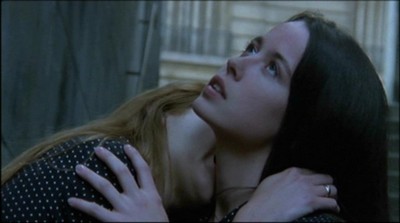
The faces of Henriette and Louise are transformed according to the emotional charge of the recollected memory. Their facial expressions remain, however, moderated, like their gestures: minimalist, calculated, even automated. Pascal Français sees in these “silent cinema” styled performances by Rollin’s actors the heritage of avant-garde cinema:
J’entends par là des interprètes aussi accoutumés à jouer dans un registre pathétique ou exalté, qu’à exprimer une gamme de sentiments extrêmes avec toute la retenue qu’autorise une présence charismatique.
I mean by this, actors who are as accusumed to play roles that have a pathetic register or an exalted one; to show extreme sentiments with all the restraint authorized by a charismatic presence.
Underlining these avant-garde elements may give one the impression that Two Orphan Vampires is simply a pastiche of the hallowed art movement. On the contrary, Rollin’s films are marked by a mannerist tendency but are not limited to simply replaying the codes. Rollin also assumes a certain distance from the movement, while allowing for a climate of perceptible nostalgia through the timeless quality of the works. For example, it is difficult to define with any precision what time period the film is set in. The characters wear retro clothing; their white walking sticks are old-fashioned models; we do not see technological appliances such as televisions or computers, and the architecture of the buildings, particularly the orphanage where Henriette and Loiuse live, are baroque rather than contemporary. The protagonists seem to exist between two temporalities, the past and the actual. Rollin displays this link between these two time periods during a flashback set in New York city. During a nighttime visit at a cemetery Henriette and Louise begin to reminisce about the past, a bridge, and “the hour of the hunt.” The scene cuts to a bluish tinged shot of the two women, dressed in black wearing dark glasses, walking on a bridge (a music cue echoes Fulci’s The Beyond, which famously contains a scene on a similar [the same?] bridge).
After feeding on a young male artist who was casually sketching a view from the bridge (perhaps a coy intertextual reference to Rollin himself, ‘drinking’ from his own works), the scene cuts to Henriette and Louise frolicking through a small cemetery. As they leave the cemetery the camera tilts up to reveal a modern (New York) cityscape with high rise buildings and a gothic church. Unlike the real-time world of daytime, nighttime for the two orphans is not tied to linear time-space. Perhaps we can consider this flashback a subtle criticism of the avant-garde which, enclosed within its own artistic ambitions, became unable to evolve with the world around it. This point is not meant in the least to detract from Rollin’s affection for the avant-garde, since he uses these avant-garde codes to metaphorically invoke the cinema viewing experience.
By day, Henriette and Louise are two teenagers whose only wish is to recover from their blindness. At night fall their powers of sight return, and they enter a magic universe. We are dealing here with what Gilles Deleuze qualifies as movement of the world, which is:
[…] un mouvement virtuel, mais qui s’actualise au prix de l’expansion de l’espace tout entier et d’un étirement du temps.
[…] a virtual movement, but which actualises itself at the expense of total space and expanded time.
Jean Rollin’s characters, however, have the singularity of being conscious of these time-space displacements. Henriette and Louise await the night with great apprehension, and allow themselves to be invaded by it. They desire it greatly because this time-space permits them to act out their preferred roles. Nighttime in The Two Orphan Vampires is also the moment when their sight and memory return, where they encounter dream creatures, live their adventures and, most of all, where their most perverse fantasies are actualised. Henriette observes at the end of the film that these cherished moments are like a play which comes to an end at daytime. The vampires claim to see the nights in blue, which is the optimum color to represent nighttime in cinema (‘day for night’ is commonly shot with a blue filter or tinted blue). The analogy between the vampire’s nights and projection time is confirmed because in both cases darkness is penetrated and gives way to a window onto another world, one that signifies an escape from the quotidian routine imposed on Henriette and Louise by the orphanage or their adopted father. Rollin succeeds in using the pure cinema cherished by the avant-gardists to film the medium itself and design it as a bearer of nocturnal myths.
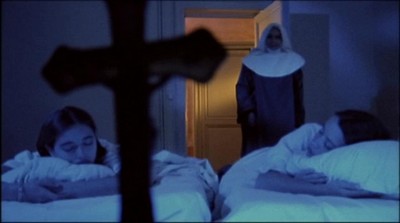
This re-mythologisation of avant-garde cinema in Two Orphan Vampires also allows Rollin to consider his own work as the final chapter of the movement that initially inspired him. This inspiration is evident in several subtle allusions to avant-garde classics, like the shot of the two orphans at a window looking out that is a restaging of a similar shot from Maya Deren’s Meshes of the Afternoon (1943); and the coupling of the two orphans which echoes the two orphan sisters in the French avant-garde classic from 1924, Ménilmontant (dir., Dimitri Kirsanoff).
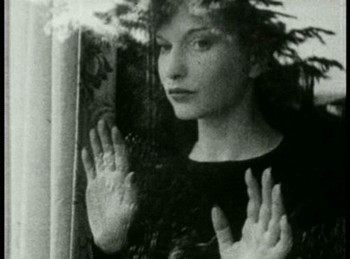
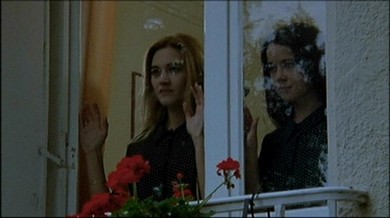
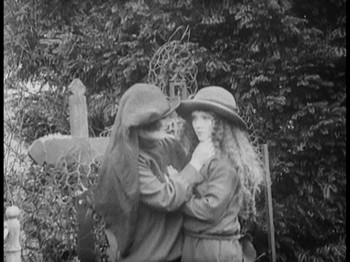
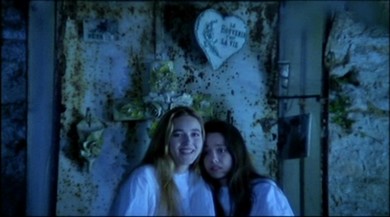
This impression of finality that emerges from the film is largely a result of its self-reflexivity. On top of citing his favorite authors [6], Rollin makes many references to his earlier works. For example, the cemetery location echoes its emblematic meaning in La rose de fer (1973, Rose of Iron), where it represented a transitory frontier between the world of the living and the dead. Two Orphan Vampires also stars one of the most recognizable faces from Rollin’s filmography, actress Brigitte Lahaie. Lahaie has become a living citation of Rollin’s key films, including Fascination (1979) and La nuit des traquées (1980, Night of the Hunted). Still more explicit is the presence of twins, which appeared in Rollin’s third feature, Vierges et vampires (1971, Virgins and Vampires), and since then have re-appeared in the majority of his films, but always as secondary characters. It is significant then that, in addition to the recurring elements from his earlier films, he makes the twins the central characters to complete the cycle, in turn playing out the death of the avant-garde in the final scene of the film. After being shot by a man with a rifle, Henriette realizes that she has little time to live. Together with Louise, she sinks below the water of a pond. The next shot is a jarring reverse angle cut to their watery tomb. Gradually, the blue light associated with the nighttime vision of the vampires dissipates, giving way to realist day light, as if their magical universe has disappeared entirely, replaced by the monotony of the everyday. Perhaps we sink into the trap of over-interpretation by seeing in this single shot the death of a whole film movement, but if we take into account that artistic journey is at the core of ?? Deux orphelines vampires??, the proposition appears at least pertinent.
Certainly, hope always remains. Before dying Louise gives a book to a young farmer’s wife which contains images of themsleves as Aztec Goddesses (tellingly, the back cover reads ‘Houdini’ and features a drawing of the world’s most famous escape artist/magician). She explains that this book will remind her about the two vampires who took refuge in her barn. The final shot shows us the girl seated on the marshy grass nearby where Henriette and Louise disappeared, clutching the book tightly between her arms. The camera then tracks left to the spot where we last saw Henriette and Louise. With this camera movement that directly links the farm girl to Henriette and Louise, we can assume that the myth of the two orphan vampires will be perpetuated through the farm girl. However, Rollin’s most recent film, La nuit des horloges (2007), seems to contradict any such assumptions. In La nuit des horloges a woman loses herself in the imaginary universe of a dead filmmaker, becoming a character herself and encountering people populating his films. Like in Les deux orphelines vampires, the film presents itself as a testamentary palimpset of his filmography, with the difference that the references are even more explicit; but the ending does not offer the possibility of continuity. When the heroine is finally liberated from the parallel dimension she is suddenly struck with amnesia and is unable to remember her journey. If there is thus an attempt to renew the cinema of avant-garde, ultimately Rollin demythologises the immortal nature of the avant-garde movement without leaving open the possibility of a resurrection.
Translated, revised, and edited from French by Donato Totaro
Endnotes
1 Français, Pascal, «Jean Rollin, toujours unique! » In _Imagine_…, Trois-Rivières, n. 78, (vol. XVIII, n.1), December 1996.
2 Dulac, Germaine, « Le cinéma d’avant-garde » In L’HERBIER, Marcel, Intelligence du cinématographe, Paris, Editions d’aujourd’hui, 1977, p. 348.
3 Morin, Edgar, Le cinéma ou l’homme imaginaire, Essai d’anthropologie, Paris, Gonthier, 1958, p. 61.
4 Français, Pascal, Jean Rollin, cinéaste écrivain, Paris, Éditions Films ABC, 2002, p. 72.
5 Deleuze, Gilles, Cinéma 2 : L’image-temps, Paris, Minuit, (coll. « Critique ») 1985, p. 81.
6 In the tradition of Godard, Rollin regularly films his favorite books. It is with obvious irony, then, that he has his two blind heroines reading Georges Bataille’s masterpiece of erotic litertature, Histoire de l’œil (History of the Eye). Also of note is the presence of the critical study by Pete Tombs, Immoral Tales, one of the rare books that contains a chapter on his work.


